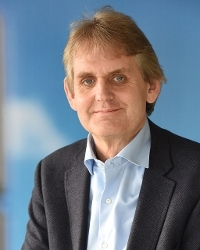
Six million boost to search for new antibiotics
Edith Schippers, Minister of Health, will be investing six million euros over the coming four years to boost research on new antibiotics. The programme will be set up by several different parties, including the Leiden Centre for Antimicrobial Research.
Focus area for Schippers
Schippers has declared the search for antibiotics to be one of her focus areas. She banged the drum on this issue internationally when the Netherlands held the presidency of the EU during the first six months of 2016. Now, six million euros have been made available to fund a new research programme, in collaboration with the STW Technology Foundation and the Topsector Chemie, who will be contributing a total of two million. The programme follows on from a previous, very successful STW programme on new antibiotics, known as Genbiotics.
Spider in the web

Gilles van Wezel, Professor of Molecular Biotechnology at the Institute of Biology, has committed together with other parties to set up this new research programme. Applications for subsidies can be submitted in the spring of 2017, and can come from any relevant field. Some of the funding will be used to set up the National Antibiotic Development Platform, the NADP, that will act as a spider in the web, coordinating the cooperation between the knowledge institutions and businesses involved. One of their tasks will be to bring scientists and companies in contact with one another.
NCOH
The NADP aims to bring together everyone in the Netherlands who is involved in developing new antibiotics, or alternatives for antibiotics. The Platform will be part of the Netherlands Center for One Health (NCOH); Leiden University and the LUMC recently became members of this organisation. Van Wezel is a member of the Executive Board of NCOH; Ed Kuijper, Professor of Experimental Bacteriology, is a member on behalf of LUMC. There are now seven universities and university medical centres working together within NCOH on a ultidisciplinary, integrated aproach to the worldwide risk of the spread of infectious diseases. Antibiotic resistance is one of the key areas of attention.
Increasingly resistant bacteria
The major problem facing the medical world is that more and more harmful bacteria are becoming resistant to one or more types of antibiotics. A lung or bladder infection that used to be treatable with antibiotics can now be fatal. One of the reasons for this increased resistance is the over-use of antibiotics worldwide, both in humans and in animals. More than 25,000 people in Europe and over 700,000 worldwide have died as a result of bacterial infections, and this number will increase rapidly if no alternative medicines are developed, rising to an expected 10 million victims by 2050.
Never been done before
‘Antibiotic resistance has been around as long as antibiotics,' Van Wezel explains. With his research je participates in the Centre for Antimicrobial Research (CARES). ‘This resistance has been developing too, because the bacteria that make the antibiotics are themselves sensitive to damage. Two-thirds of all antibiotics are made by the Streptomyces bacteria. Antibiotics are a natural product that are generated by these very bacteria in order to protect themselves against other harmful bacteria. But the antibiotics that come from bacteria are losing the battle against bacteria that are harmful to humans and animals because these last bacteria have been able to arm themselves. We now have to start doing things that have never been done before, and that the drugs industry has never done befor either. It's a difficult task, in spite of all the efforts made in recent decades.'
Fifteen years to produce effective pill
It is a case of all hands on deck in searching for alternatives to the current antibiotics. Van Wezel: ‘It takes about fifteen years from the first scientific steps to an effective pill.' Schipper's support is very welcome.
'Dormant' bacteria
The Leiden focal area is 'dormant' bacteria, that cannot be produced under normal growth conditions and so cannot be discovered. The Streptomyces bacteria can in principle produce these antibiotics, but they only do so if called for by the circumstances. Van Wezel: ‘The challenge now is to understand when these antibiotics are switched on. Or, how can we wake up sleeping antibiotics? In the past we dicovered that a molecule from the cell wall is a signal to activate certain antibiotics and we are seeing now that interaction with other bacteria or with plants often activates the production of antibiotics.' Synthetic biology is also looking at methods of changing DNA and expressing it so that new variants of antibiotics can be be made. 'A good method could be to bring antibiotic-producing bacteria into contact with an enemy bacterium to see whether this activates the production of specific antibiotics.’ In analysing the molecules, Van Wezel works closely with the Metabolomics Centre at Leiden University, in particular with Thomas Hankemeier, Professor of Analytical Biosciences, and Young Choi, Associate Professor of Natural Products
Centre for Antimicrobial Research
Metabolomics Centre
